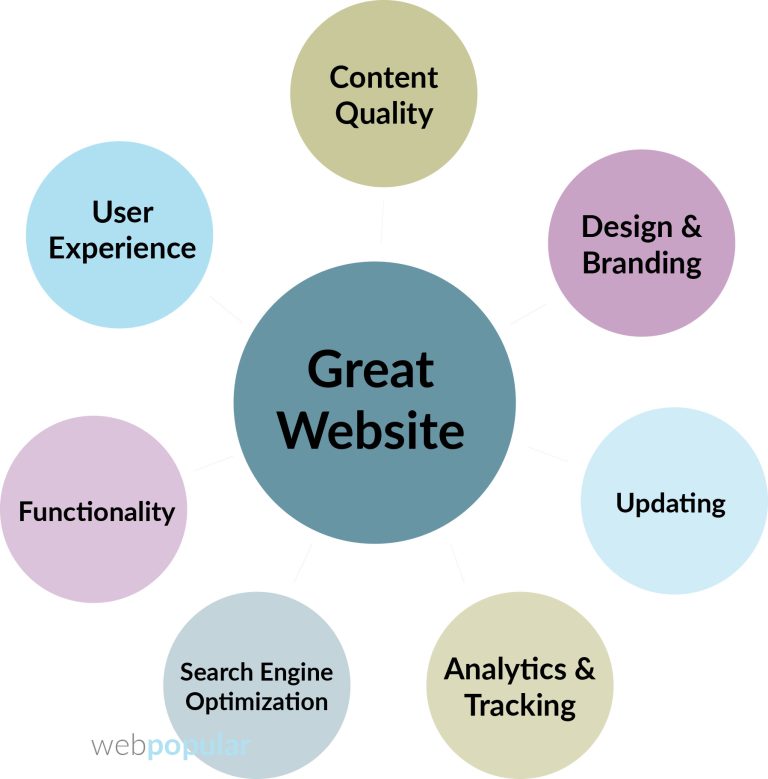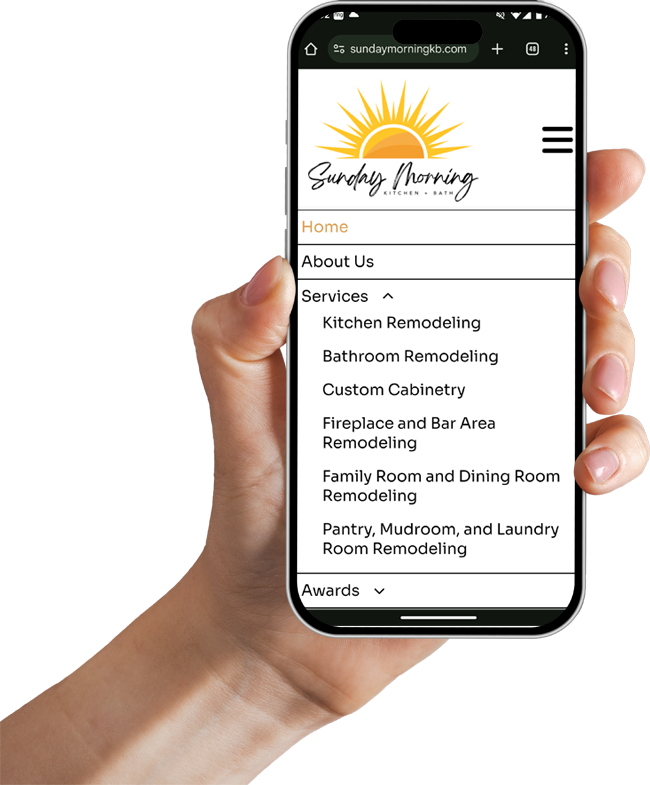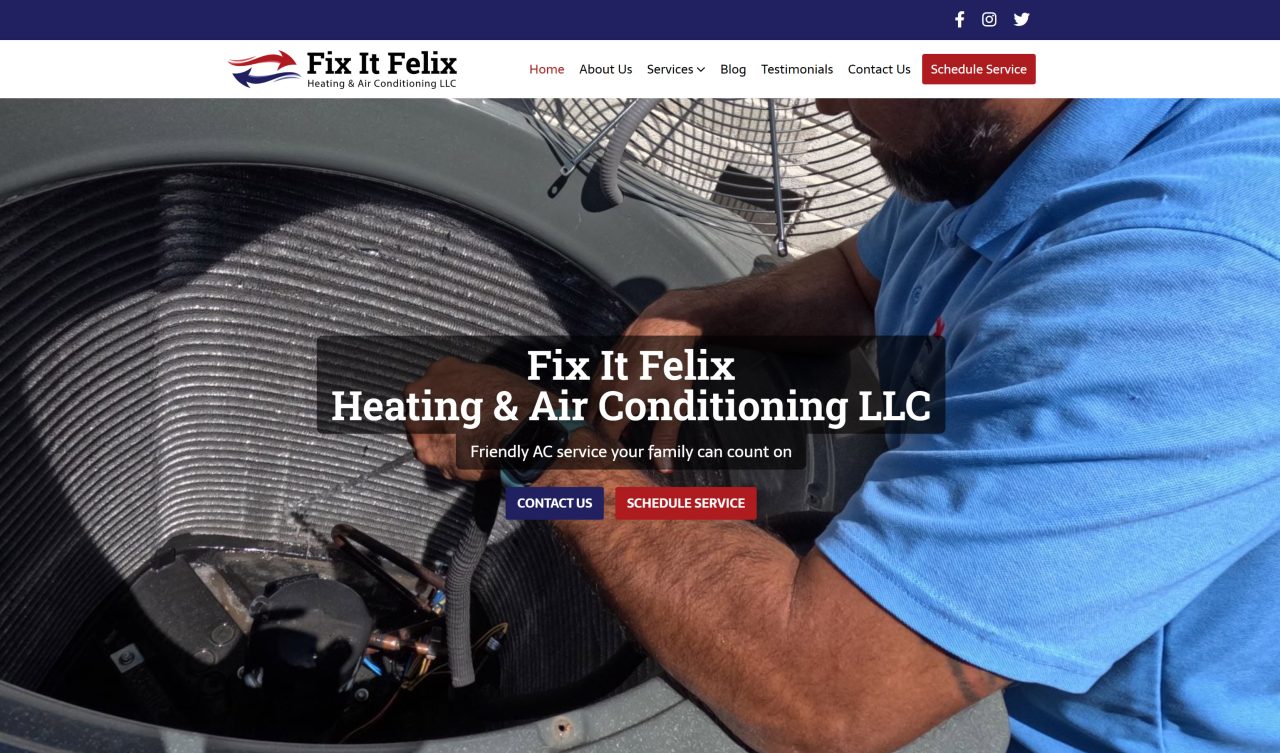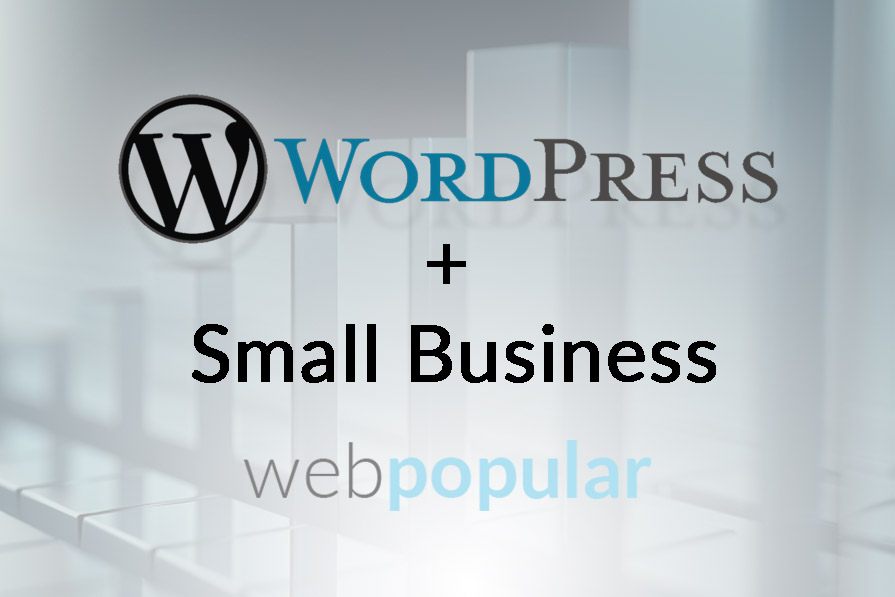Every business deserves a scalable website that connects with their audience.
Your website is the cornerstone of your business’s ability to engage with customers, grow with your needs, and achieve long-term success. A well-built website isn’t just an online presence—it’s a powerful tool that drives business growth and enhances customer experience.
Why does having a great website matter?
A great website is crucial for several reasons:
First impressions and credibility: Your website is often the first interaction potential customers have with your brand. A professional, well-organized website builds trust and credibility right from the start.
User experience and engagement: A website that’s easy to navigate and enjoyable to use keeps visitors engaged, encouraging them to explore more of what you offer.
Conversion rates and business growth: An optimized website with clear calls to action turns visitors into customers, directly impacting your bottom line.
Supporting your marketing strategy: Your website is the hub for all your digital marketing efforts, from content marketing to social media campaigns. It amplifies these efforts and makes them more effective.
Efficient processes: A well-designed website streamlines operations, automating tasks like scheduling, lead generation, and customer support.
Common problems with small business websites
Many small businesses struggle with website issues that hinder their success:
Limited capabilities, unable to grow with business: Websites often lack the functionality needed to scale with the business, limiting growth opportunities.
Limited control of website: Relying on platforms with restricted customization options prevents full control over your site’s look, feel, and functionality.
Rent their website and/or marketing: Renting a website or marketing services can be expensive without adding lasting value to your business.
High maintenance fees with no investment in the website: Paying high fees for outdated websites that don’t improve over time is a common problem.
Busy or too much content: Cluttered layouts and overwhelming content can confuse visitors and detract from the user experience.
Not mobile-friendly: With more users accessing the web on mobile devices, a non-responsive website means lost opportunities.
Content doesn’t reflect brand: Inconsistent or poorly crafted content weakens your brand’s message and fails to resonate with your audience.
What makes a great website?


User Experience (UX)
- Ease of navigation: Your website should be simple to navigate with a clear, logical menu structure. Users should find what they’re looking for quickly.
- Mobile responsiveness: Ensure your website works seamlessly on all devices, particularly mobile.
- Load speed: Optimize your website for fast loading times to reduce bounce rates.
- Ease of content digestion: Make sure your content is easy to read and understand. Use clear headings, bullet points, and short paragraphs to enhance readability.
Content quality
- Relevance to audience needs: Your content should address the needs and interests of your target audience. Provide value and solutions to their problems.
- Clarity and readability: Write clear, concise content that’s easy to understand. Avoid jargon and keep your messaging straightforward.
- Quality pictures and examples: Use high-quality images and real-world examples to illustrate your points and engage your audience visually.
- Unique Value Proposition: Clearly communicate what sets your business apart. Why should customers choose you over the competition?
- Smart Call to Actions: Strategically place calls to action throughout your site to guide users towards desired actions, such as signing up for a newsletter or making a purchase.

Functionality
- Custom forms: Allow users to fill out forms tailored to their needs, whether for questions, newsletter sign up, schedule, or requests.
- Connect to Task Galaxy or other CRMs: Integrate your website with Task Galaxy or other CRM systems to manage customer relationships effectively.
- Automation: Automate tasks like drip campaigns, scheduling, email responses, and lead nurturing to improve efficiency.
- Chatbots and live chat: Offer real-time support through chatbots or live chat, helping users get answers immediately.
- Advanced search: Implement robust search features so users can easily find the information or products they’re looking for.
- Community: Build a community around your brand with forums, user groups, or social features that encourage interaction.
- Blogging: Regularly publish blog content to engage your audience, improve SEO, and establish thought leadership.
- Scheduling: Provide online scheduling options for appointments, consultations, or demos, simplifying the process for users.
- Sales Funnels: Create sales funnels on your website to guide visitors through the buyer’s journey, from awareness to conversion.
- Lead Magnets: Offer valuable resources like eBooks, guides, or templates in exchange for users’ contact information to build your email list.
Search engine optimization
- Keyword research: Identify and use relevant keywords that your target audience is searching for.
- On-page SEO: Optimize titles, tags, content, and URLs to improve search engine ranking and visibility.
- Technical SEO: Ensure your website is technically sound with proper indexing, clean code, and an XML sitemap (e.g., ensure it’s optimized for factors like LCP, FID, CLS – Core Web Vitals).
- Off-page SEO: Build high-quality backlinks and engage in social media to enhance your site’s authority and reach.


Analytics and tracking
- Visitor tracking: Use tools like Google Analytics to monitor where your traffic comes from and how visitors interact with your site.
- Conversion tracking: Track conversions such as form submissions, purchases, or sign-ups to measure your site’s effectiveness.
- Keyword tracking: Monitor which keywords are driving traffic to your site and adjust your SEO strategy accordingly.
- A/B testing: Regularly test different versions of pages or elements to find out what works best and optimize performance.
- User experience tracking: Track how users interact with your site, including heatmaps and session recordings, to identify areas for improvement.
Updating
- Regularly visit site and review: Frequently check your website to ensure it’s functioning properly and up to date with your offer.
- Create content to solve customer’s problems: Continuously publish content that addresses the pain points and needs of your audience.
- Stay updated with trends: Adapt your website to new trends and technologies to ensure it remains relevant.
- Update design and features: Refresh your design and add new features periodically to keep the site modern and engaging.

Conclusion
To succeed in today’s competitive landscape, you need a scalable website that connects with your target audience. Ensure your website is easy to use, with content that’s simple to digest and valuable to your visitors. Continuously create content that solves your customers’ problems and always lead people back to your website. Invest in multiple lead magnets and automate processes through your site to maximize efficiency. Finally, strategize around your analytics and A/B testing to continually improve your site’s performance. By focusing on these areas, you can build a website that not only meets today’s standards but also grows with your business and delivers lasting value.
